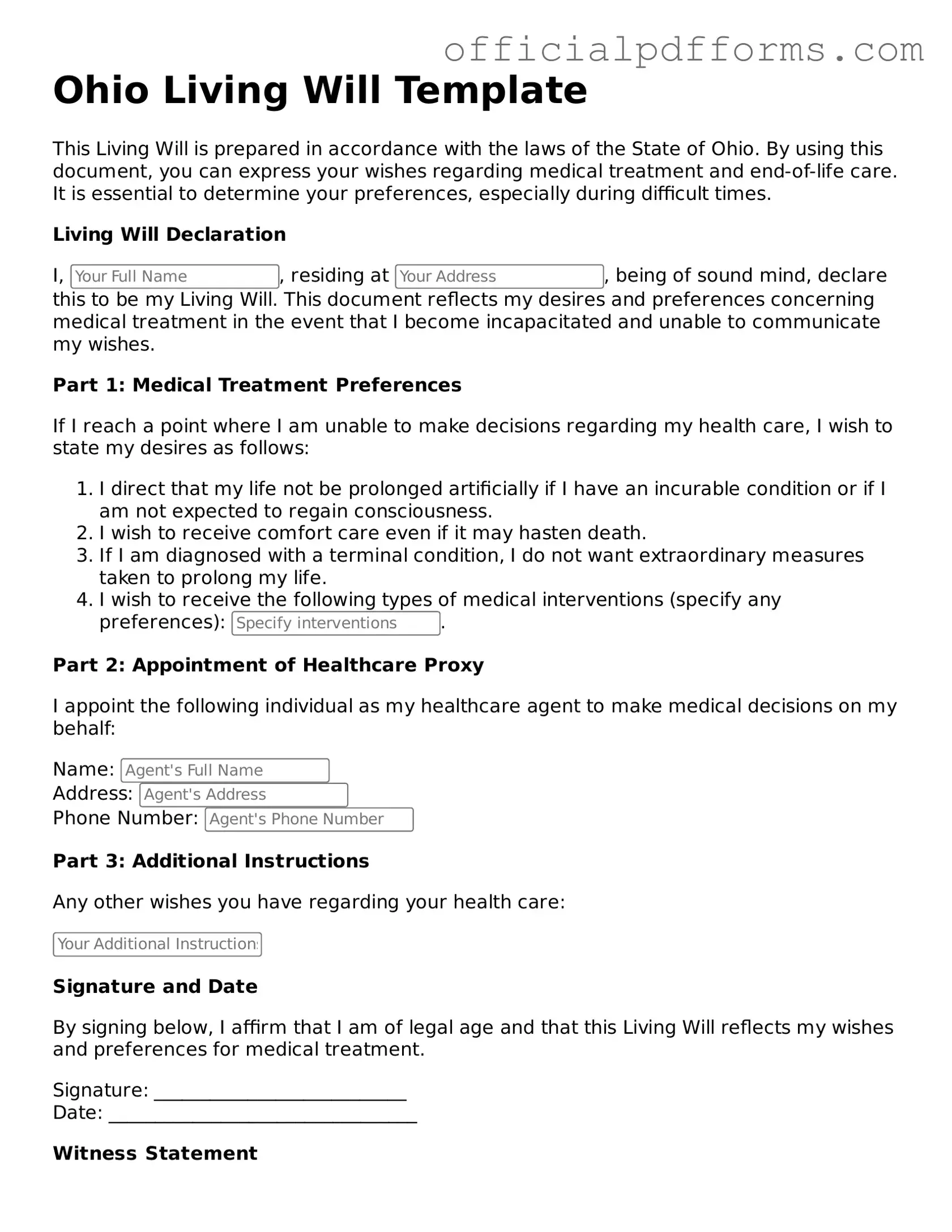What is a Living Will in Ohio?
A Living Will is a legal document that allows individuals to express their wishes regarding medical treatment in the event that they become unable to communicate those wishes themselves. In Ohio, this document specifically outlines the types of medical care a person does or does not want to receive if they are diagnosed with a terminal condition or are in a persistent vegetative state.
Who can create a Living Will in Ohio?
Any adult who is at least 18 years old and of sound mind can create a Living Will in Ohio. This includes individuals who are facing serious health issues or simply want to ensure their medical preferences are known in advance.
What should be included in a Living Will?
When drafting a Living Will, consider including the following:
-
Your preferences for life-sustaining treatments, such as resuscitation, mechanical ventilation, and tube feeding.
-
Specific instructions regarding pain relief and comfort care.
-
Any other personal wishes regarding your healthcare and end-of-life decisions.
Being clear and specific can help avoid confusion among your healthcare providers and loved ones.
How do I create a Living Will in Ohio?
Creating a Living Will in Ohio can be done in a few simple steps:
-
Download or obtain a Living Will form from a reliable source.
-
Fill out the form, ensuring you clearly state your medical preferences.
-
Sign the document in the presence of two witnesses or a notary public, as required by Ohio law.
Once completed, it is important to share copies of your Living Will with your healthcare providers and family members.
Can I change or revoke my Living Will?
Yes, you can change or revoke your Living Will at any time, as long as you are of sound mind. To revoke the document, simply destroy it or create a new one that explicitly states your updated wishes. It is advisable to inform your healthcare providers and family members about any changes to ensure they are aware of your current preferences.
What happens if I do not have a Living Will?
If you do not have a Living Will, medical decisions may be made by your family members or legal representatives, based on what they believe you would want. This can sometimes lead to disagreements or uncertainty about your wishes. Having a Living Will helps ensure that your preferences are honored and can reduce stress for your loved ones during difficult times.
Is a Living Will the same as a Power of Attorney?
No, a Living Will and a Power of Attorney are different documents. A Living Will specifically addresses your healthcare preferences, while a Power of Attorney for healthcare designates someone to make medical decisions on your behalf if you are unable to do so. It is often advisable to have both documents to ensure your healthcare wishes are fully represented.
